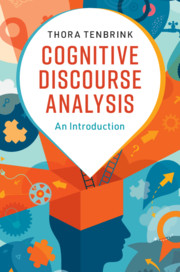Book contents
- Cognitive Discourse Analysis
- Cognitive Discourse Analysis
- Copyright page
- Contents
- Figures
- Tables
- Preface
- Acknowledgements
- Introduction
- 1 Background and Scope
- 2 Language as a Representation of Thought
- 3 Resources
- 4 Identifying Cognitive Orientation
- 5 Identifying Cognitive Depth
- 6 Identifying Cognitive Constructiveness
- 7 Using Language to Convey Thoughts
- 8 CODA Procedures
- 9 Beyond CODA
- Register of Linguistic Features
- References
- Index
9 - Beyond CODA
Published online by Cambridge University Press: 23 January 2020
- Cognitive Discourse Analysis
- Cognitive Discourse Analysis
- Copyright page
- Contents
- Figures
- Tables
- Preface
- Acknowledgements
- Introduction
- 1 Background and Scope
- 2 Language as a Representation of Thought
- 3 Resources
- 4 Identifying Cognitive Orientation
- 5 Identifying Cognitive Depth
- 6 Identifying Cognitive Constructiveness
- 7 Using Language to Convey Thoughts
- 8 CODA Procedures
- 9 Beyond CODA
- Register of Linguistic Features
- References
- Index
Summary
Chapter 9 looks beyond CODA in two ways. On the one hand, CODA is only one among many established ways to examine human thought; linguistic analysis can be easily and fruitfully combined with other methods. The first half of this chapter addresses triangulation with performance and other observable data as well as subtler measures such as reaction times and eye movements, and also includes brief discussions of cognitive modelling and corpus linguistic methods. On the other hand, CODA is rarely used purely for its own sake; more often than not, linguistic analysis is part of a wider goal. Results can be used for a multitude of applications and purposes, including implementation in automatic systems that support human everyday needs. Therefore, the second half of Chapter 9 concludes the book with a discussion of practical applications for the methodology in academia and beyond, in applied and interdisciplinary fields such as architecture and artificial intelligence, and also looks at how CODA results can be made more accessible using suitable visualisation tools. The final section provides a brief wrap–up of the book's main messages.
Keywords
- Type
- Chapter
- Information
- Cognitive Discourse AnalysisAn Introduction, pp. 226 - 250Publisher: Cambridge University PressPrint publication year: 2020

